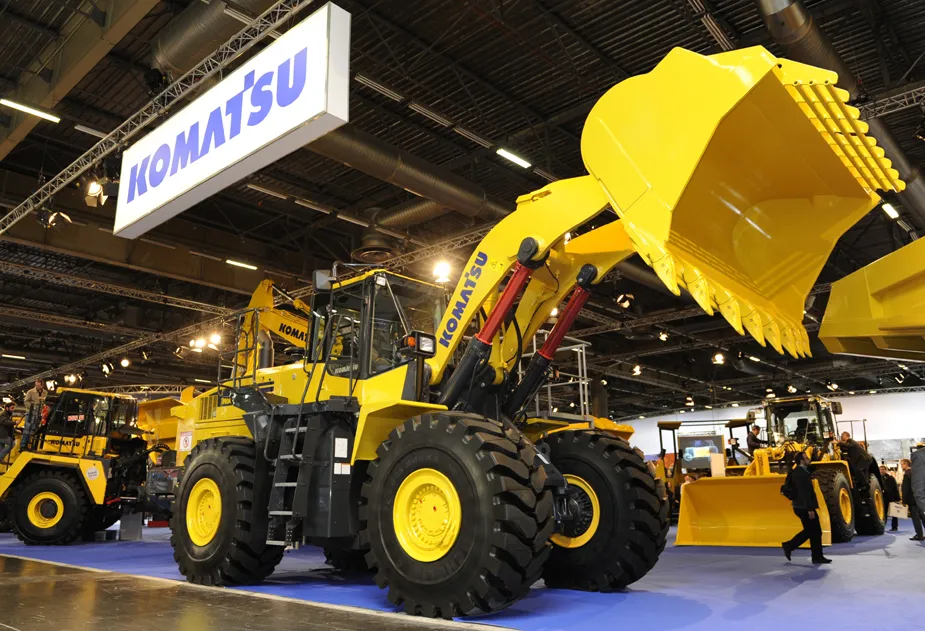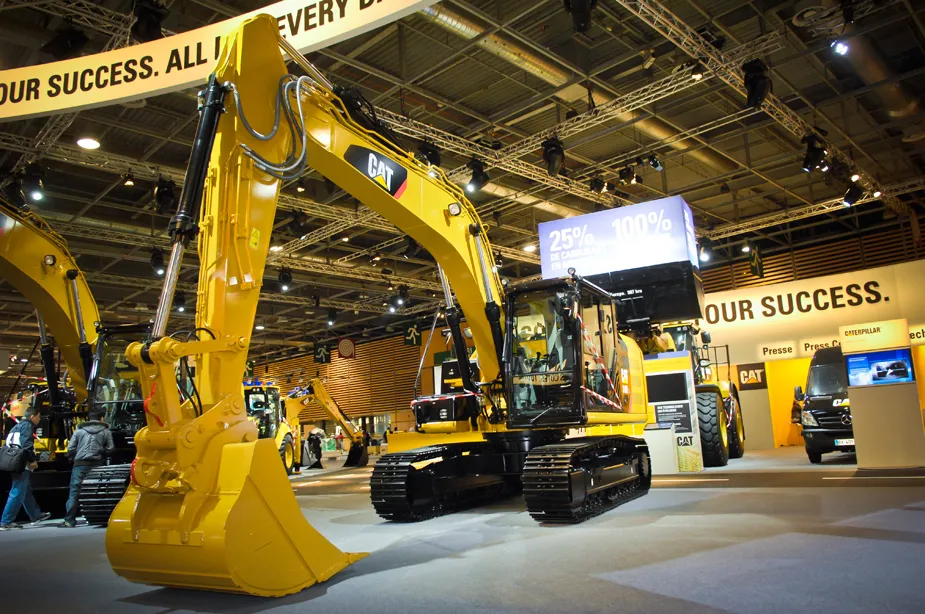Komatsu used INTERMAT to take the wraps off two new Dash 7 wheeled loaders, badged WA380-7 and WA500-7. With engine emissions being the main driver, the smaller 18-tonne WA380-7 packs 142kW from its EU Stage IIIb engine to deliver improved efficiency and lower fuel consumption. The machine also gets torque converter lock-up with the function operating in 2nd, 3rd and 4th gears, and gives the loader a 40 km/h forward speed.
April 19, 2012
Read time: 2 mins

With engine emissions being the main driver, the smaller 18-tonne WA380-7 packs 142kW from its EU Stage IIIb engine to deliver improved efficiency and lower fuel consumption.
The machine also gets torque converter lock-up with the function operating in 2nd, 3rd and 4th gears, and gives the loader a 40 km/h forward speed.
The larger WA500-7 tips the scales at 33,750kg and also gets an EU Stage IIIb emission-certified engine. The 263kW six-cylinder engine features a hydraulically actuated variable geometry turbocharger and exhaust gas recirculation, plus an integrated diesel particulate filter.
Smart Loader Logic is a feature of the WA500-7. It saves fuel, said Komatsu, by automatically decreasing engine torque when the loader isn’t working hard. Komatsu SmartLoader Logic operates automatically and does not decrease production cycles.
A new cab on the WA500-7 offers a lower front windscreen and a redesigned dashboard to improve visibility. Short-lever Electronic Pilot Control (EPC) is connected directly to the seat, while climate control, a CD-Radio and two 12volt sockets are incorporated into the cab.
%$Linker:
Hall: 6 Stand: G042
%$Linker:






